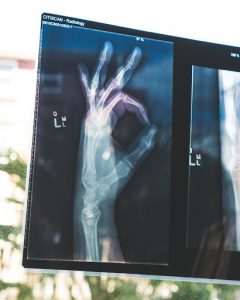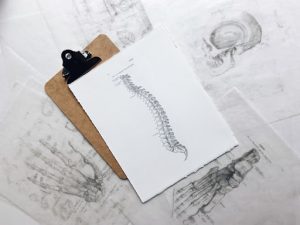Osteoporosis is a condition that relates to bone density and affects an estimated 10 million adults over the age of 50 in the United States. The condition causes bones to become brittle over time as they become less and less dense, making them more likely to fracture or deteriorate (health.gov). Bone health is a complex topic for scientists because a large number of factors are responsible for the growth and deterioration of bone, including gut health and kidney health. Scientists are constantly uncovering new information about how bones stay healthy and how to prevent the onset of conditions, such as osteoporosis, which threatens bone health.

Research in recent years suggests that gut health is strongly linked to bone health. The vast assortment of microorganisms located within the gut is known primarily for its role in digesting food, but it also affects how bones develop over time. A 2012 study using mice discovered that a lack of microorganisms contained within the stomach led to an increase in bone mass. Furthermore, by reintroducing microbes into the gut, scientists were able to get bone density back to normal (asbmr.olinelibrary.wiley).
During the experiment, when the mice had no microbes in their guts, scientists observed that their bodies produced fewer osteoclasts (asbmr.onlinelibrary.wiley), which are cells that degrade bone in order for the natural remodeling of bones to occur (NIH). These findings are exciting to scientists who never before predicted that these two parts of the body were so closely linked.
Osteoclasts work hand in hand with other cells called osteoblasts that act as the building blocks for bone growth. The cooperation of these cells is what allows the bone structure of children to reform into an adult bone structure later in life. There is also a third group of cells which affects bone development: osteocytes. For many years, very little was known about the purpose of osteocytes. However, in 2006, a scientist named Lynda Bonewald discovered that osteocytes may be more important than scientists realized at the time (knowablemagazine).

Bonewald found that osteocytes produce a growth factor called FGF23. FGF23 travels to the kidneys through the bloodstream, and when too much FGF23 is present, it causes the kidneys to release too much phosphorus from the body in urine. If too much phosphorus is released, the body may experience softened bones as well as other harsh symptoms (knowablemagazine).
Bones are more complex than most people realize, not just in the way they maintain their structure, but in the way they are directly linked with other parts of the body. Scientists have only just scratched the surface of how bone cells interact with other organs.
Written by: Matthew Jenkins
Date: May 2, 2022
Sources:
https://health.gov/healthypeople/about/workgroups/osteoporosis-workgroup
https://asbmr.onlinelibrary.wiley.com/doi/full/10.1002/jbmr.1588
https://pubmed.ncbi.nlm.nih.gov/19883363/
https://knowablemagazine.org/article/health-disease/2022/fun-facts-about-bones-more-just-scaffolding
